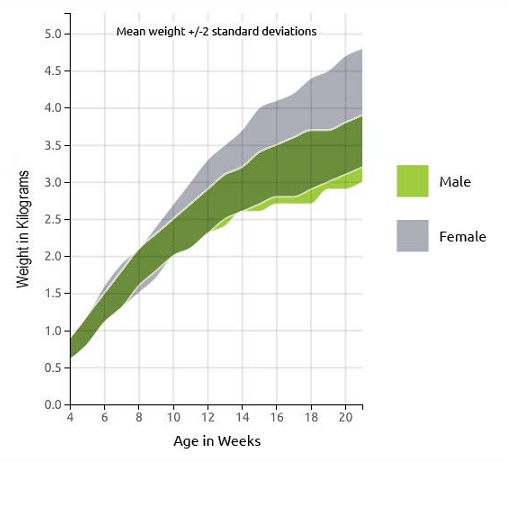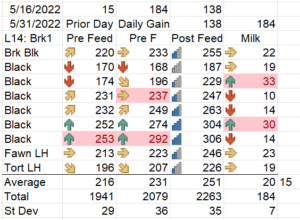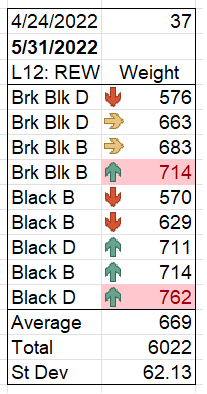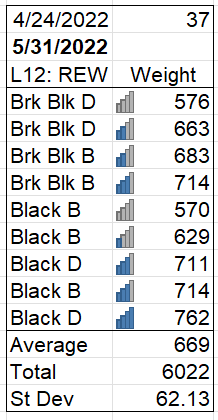Selecting Meat Rabbits
Meat Rabbit Selection: Mystical Springs New Zealands

Breed standard weights by age. These rabbits are bred at 20 weeks of age. They will continue to grow to adult size by 8 months of age. Any animals outside of these ranges will not be sold for breeding stock, but may be available stipulated as pets only.
Sample Litter Daily Records I collect:

Daily Litter Weight Record


After 21 days, bunny growth rate is the result of genetics and feeding more that the result of the mothers milk supply. Comparing daily gain records within the litter and to my herd average dictates what happens to the individual bunnies.
Green arrows are top 25%, These are the ones I keep for does, top 10% for bucks. Green and Yellow arrow are the ones I will make available for sale. Red arrows are culled, either butchered or sold for pets.
Herd average comparisons are useful to determine the overall rank of each rabbit compared to my overall breeding program, adjusted for the does milk contribution. If the litter gets off to a slow start because of the does milk supply, the exceptional animals are not culled just because they have a lower weight than others.
By adjusting for weaning weight, rabbits with good genetic gains are still saved if they are in the top 25% of the herd for growth rate. Litter size and growth rate are inversely correlated, so this is the only way to select for good growth rate even from large litters.
Another factor in litter growth rate is nipple number in the doe. Almost all rabbits have 6 or 8 teats, as they only nurse the young once per day, smaller kits can easily be starved out in litters larger than 8. I will be selecting for teat number on 2-3 day old kits, and as soon as I get ones with more than 8 teats they will be saved regardless of other data factors. Ten years ago I had selected my line to have 12 teats and my does typically raised 12-14 kits per litter. Unfortunately, this was a crossbred line, was not maintained.
